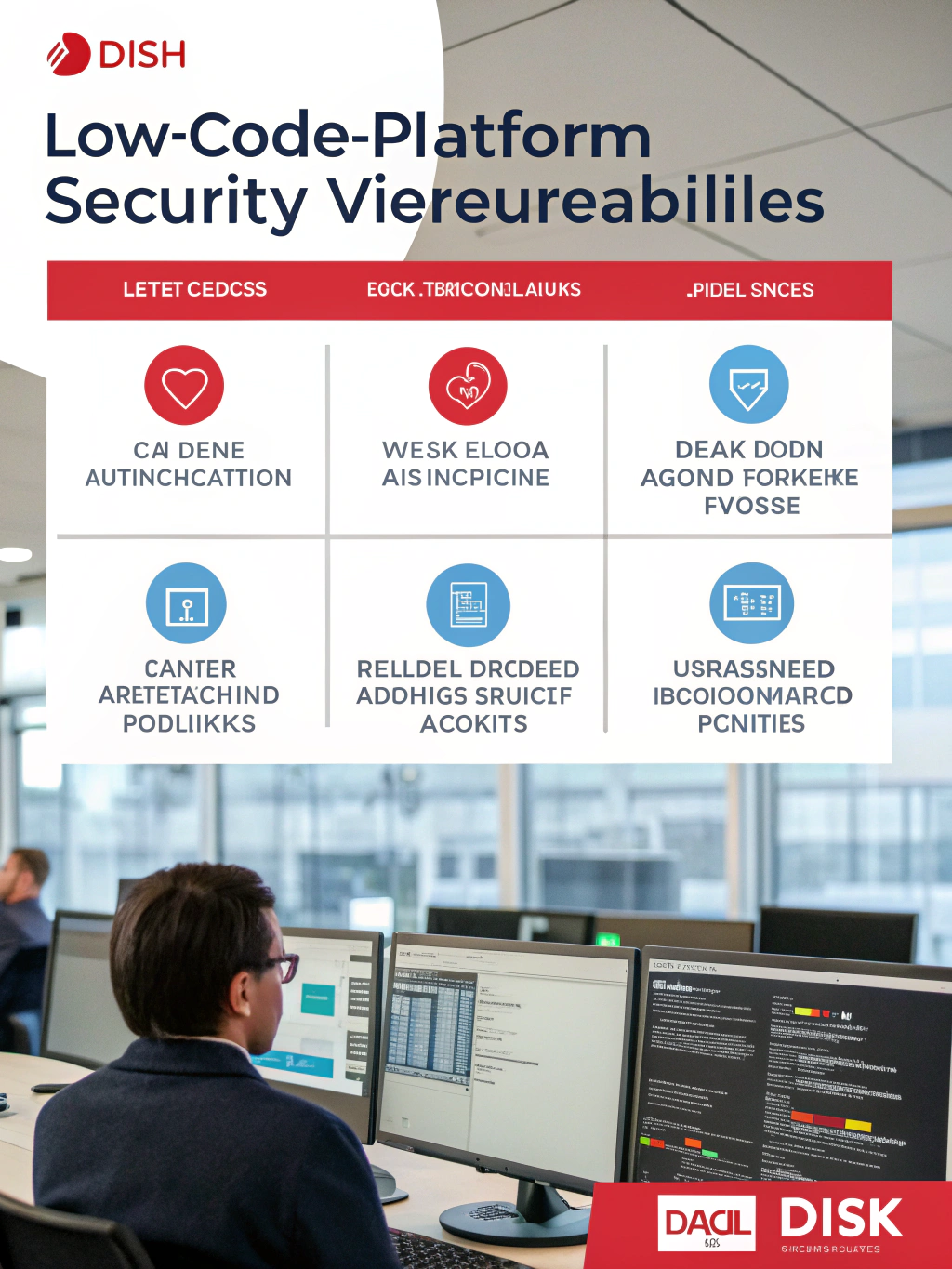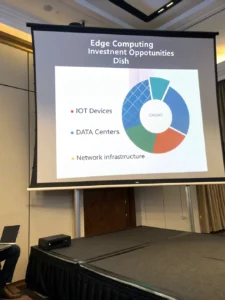Securing Your Apps: Understanding Low-Code Platform Security Vulnerabilities
The Hidden Risks in Rapid Development: Understanding Low-Code Platform Security Vulnerabilities The digital landscape is evolving at lightning speed. Businesses are under constant pressure to innovate and deliver new applications faster than ever before. Enter low-code development platforms – promising to democratize software creation and accelerate digital transformation. But this rapid development approach isn't without its pitfalls. A growing concern is the prevalence of low-code platform security vulnerabilities, which can leave organizations exposed to significant risks. These aren't just theoretical threats; they’re real and present dangers that can lead to data breaches, financial losses, and reputational damage. In this post, we'll dive deep into what these vulnerabilities are, why they matter, and, crucially, how to mitigate them. We'll explore the intersection of low-code platforms with the ever-changing worlds of cryptocurrency, artificial intelligence, and alternative investment strategies – a perfect storm demanding heightened security awareness. What Are Low-Code Platform Security Vulnerabilities? Low-code development platforms abstract away much of the traditional coding process, using visual interfaces and pre-built components to streamline application creation. This ease of use is a major selling point, but it can inadvertently introduce security weaknesses if not managed carefully. Unlike traditional software development, where security is often baked in from the ground up, low-code platforms often rely on the security measures of the platform provider. This creates a dependency that can expose organizations to risks if the platform’s security isn't robust or if vulnerabilities are not addressed promptly. Here are some common types of low-code platform security vulnerabilities: Insecure Data Handling: Poor data masking, insufficient encryption, and inadequate access controls can leave sensitive information vulnerable to unauthorized access. Injection Flaws: Similar to traditional web applications, low-code apps can be susceptible to SQL injection, cross-site scripting (XSS), and other injection attacks. These flaws arise when user input isn't properly validated. Authentication and Authorization Issues: Weak password policies, lack of multi-factor authentication, and inadequate role-based access control can allow attackers to gain unauthorized access. Third-Party Component Vulnerabilities: Many low-code platforms rely on third-party components and integrations. These components can introduce vulnerabilities if they are not regularly updated and patched. API Security Weaknesses: Low-code applications often integrate with other systems via APIs. Poorly secured APIs can be exploited by attackers to access sensitive data or disrupt operations. Insufficient Logging and Monitoring: Lack of adequate logging and monitoring makes it difficult to detect and respond to security incidents. The escalating threat landscape makes understanding application security crucial, especially within the context of low-code. Organizations must treat low-code development with the same level of security scrutiny as traditional software development. The Impact on Businesses: More Than Just a Data Breach The consequences of neglecting low-code platform security vulnerabilities can be far-reaching. Beyond the immediate financial costs associated with a data breach, organizations face: Reputational Damage: A security incident can erode customer trust and damage brand reputation, leading to lost business. Regulatory Fines: Data breaches can result in hefty fines from regulatory bodies like GDPR and CCPA. Business Interruption: A successful attack can disrupt business operations, leading to lost productivity and revenue. Intellectual Property Theft: Attackers can steal valuable intellectual property, such as trade secrets and customer data. The interconnectedness of modern businesses means that a vulnerability in a seemingly isolated low-code application can have cascading effects across the organization. Navigating the Crypto & AI Intersection: Enhanced Security Needs The rise of cryptocurrencies and artificial intelligence further complicates the security landscape for low-code platforms. Many businesses are now using low-code to build applications that interact with blockchain networks or leverage AI-powered features. This introduces new attack vectors and security challenges. Smart Contract Vulnerabilities: Low-code platforms are increasingly used to develop smart contracts for decentralized applications (dApps). Flaws in these contracts can lead to devastating financial losses. AI Model Poisoning: Attackers can manipulate AI models by injecting malicious data, causing them to produce incorrect or biased results. Data Privacy Concerns with AI: AI models often require large amounts of data for training, raising concerns about data privacy and compliance. Crypto Wallet Security: Applications built on low-code platforms managing cryptocurrency wallets must prioritize robust security measures, including multi-factor authentication and cold storage. Addressing these challenges requires a holistic approach to security that encompasses the entire application lifecycle, from design to deployment. Mitigation Strategies: Building Secure Low-Code Applications Fortunately, there are steps organizations can take to mitigate low-code platform security vulnerabilities. These include: Choose a Secure Platform: Select a low-code platform with a strong security track record and a commitment to ongoing security updates. Evaluate the platform’s compliance certifications (e.g., SOC 2, ISO 27001). Implement Strong Authentication and Authorization: Enforce strong password policies, enable multi-factor authentication, and implement role-based access control. Validate User Input: Thoroughly validate all user input to prevent injection attacks. Secure APIs: Secure APIs with appropriate authentication and authorization mechanisms. Regularly Update and Patch: Keep the low-code platform and all third-party components up to date with the latest security patches. Implement Data Encryption: Encrypt sensitive data both in transit and at rest. Enhance Logging and Monitoring: Enable comprehensive logging and monitoring to detect and respond to security incidents. Conduct Security Assessments: Perform regular security assessments, including penetration testing and vulnerability scanning. Educate Developers: Provide training to developers on secure coding practices. Here is a table summarizing key mitigation strategies: Strategy Description Secure Platform Selection Choose a platform with strong security track record & certifications. Strong Authentication Enforce strong passwords, MFA, role-based access. Input Validation Thoroughly validate all user input to prevent injection attacks. API Security Secure APIs with authentication & authorization. Regular Updates & Patching Keep platform and components up-to-date. Data Encryption Encrypt data in transit and at rest. Logging & Monitoring Implement comprehensive logging and monitoring. Security Assessments Conduct penetration testing & vulnerability scanning. Developer Education Train developers on secure coding practices. By proactively addressing application security in low-code environments, organizations can reap the benefits of rapid development without compromising security. Beyond Low-Code: Alternative Investment Strategies & Emerging Tech Security The convergence of technology and finance is creating new opportunities for investment, but also new risks. From decentralized finance (DeFi) to digital assets, investors need to be aware of the security implications. The security of smart contracts powering DeFi platforms, for example, is paramount. Similarly, the rise of AI agents and automation presents both opportunities and challenges. While AI can automate security tasks, it can also be exploited by attackers. Conclusion: Secure Innovation is Possible The need for robust low-code platform security vulnerabilities remediation has never been greater. While the speed and ease of low-code development are undeniable benefits, they must be balanced with a strong commitment to security. By implementing the mitigation strategies outlined in this post, organizations can unlock the potential of low-code while minimizing their risk exposure. The future of application development depends on building secure systems from the ground up – a principle that must be applied equally to traditional and low-code approaches. What are your biggest concerns regarding low-code security? Share your thoughts and experiences in the comments below! Don’t forget to share this article with your network to help raise awareness about this critical issue.
Share this content:














Post Comment